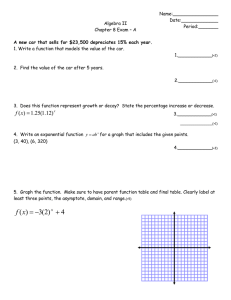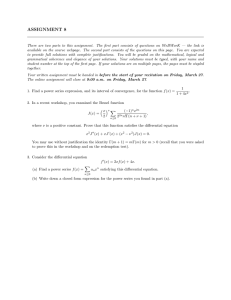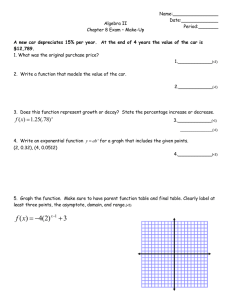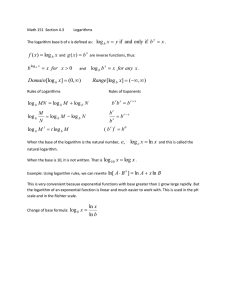Document 13211061
advertisement
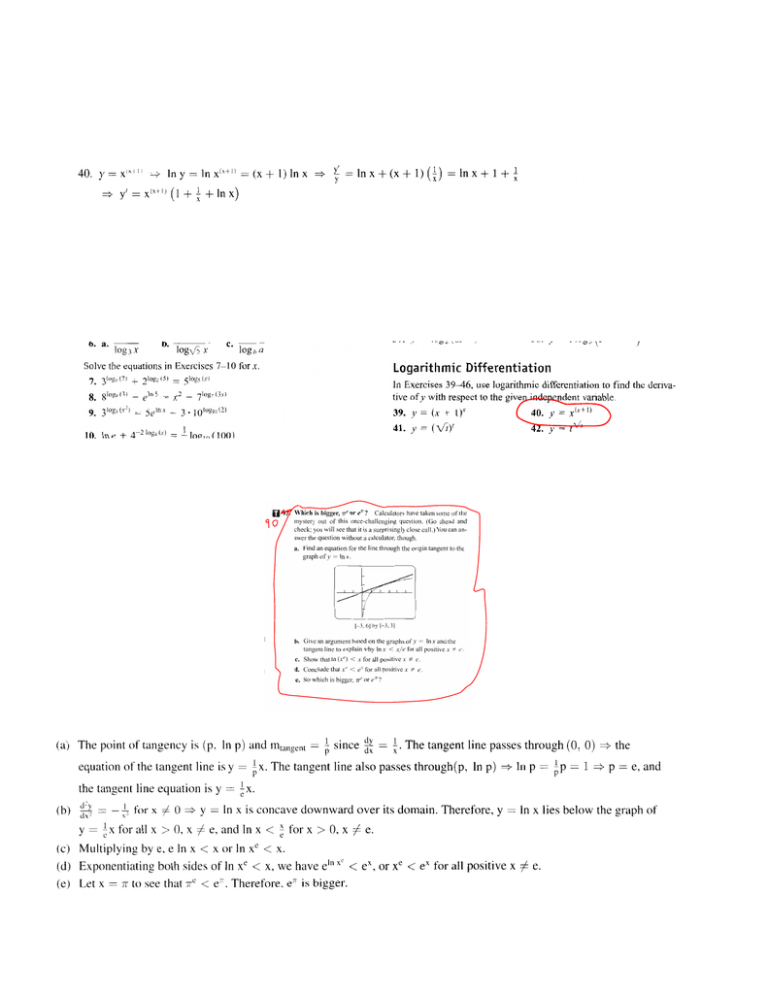
Webwork 9.1/Problem 3 Solve the differential equation du = e2u+5t . dt for the initial condition u(0) = 7. (In your case the numbers may have differed.) We separate the variables: e−2u du = e5t dt and integrate (already bringing both constants to one side): 1 1 − e−2u = e5t + C. 2 5 Solving for u yields 1 5t 1 e +C u = − ln −2 · 2 5 Do not worry about the −2 in the argument for the logarithm – we will have C a big negative number such that the argument of the logarithm is positive! Now we use the initial condition to get the value for C. Setting t = 0 yields: 1 5·0 1 e +C 7 = u(0) = − ln −2 · 2 5 and therefore 1 1 1 1 C = − e−2·7 − e5·0 = − e−14 − . 2 5 2 5 Thus the solution we want is: 1 5t 1 −14 1 1 e − e − . u = − ln −2 · 2 5 2 5 We see from this solution that for t > 51 ln 2e514 + 1 ∼ 4.1 · 10−7 the argument of the logarithm becomes negative. This means that for larger t values the differential equation has no solution. This is not surprising if we plot the solution — we see that at this t-value the solution curve goes to ∞. If the differential equation came from a model in physics, this essentially means that the model does not work for larger t-values for the given initial configuration u(0) = 7. (For example at this point the machine will have been broken or the particle has moved away or hit a wall.) 1

